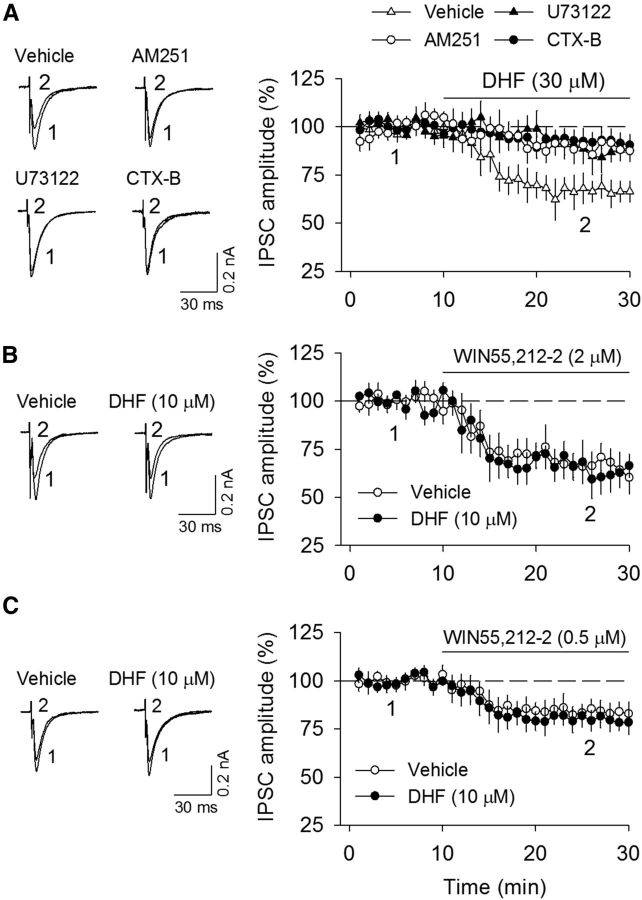Figure 4.
DHF at a higher concentration depressed IPSCs via a TrkB- and CB1 receptor-dependent mechanism. A, Bath application of DHF (30 μm) significantly decreased the amplitude of IPSCs (n = 8), and this depression was abolished by the continuous presence of the TrkB receptor antagonist CTX-B (100 nm; n = 8; p < 0.01), CB1 receptor antagonist AM251 (2 μm; n = 8; p < 0.05), or PLC inhibitor U73122 (5 μm; n = 7; p < 0.05). B, C, Bath application of CB1 receptor agonist WIN 55212–2 at 2 μm (B) and 0.5 μm (C) decreased the amplitude of IPSCs (n = 8 each group), whereas the continuous presence of DHF (10 μm) had no significant effect on this depression (n = 8 or 9; p > 0.05).

